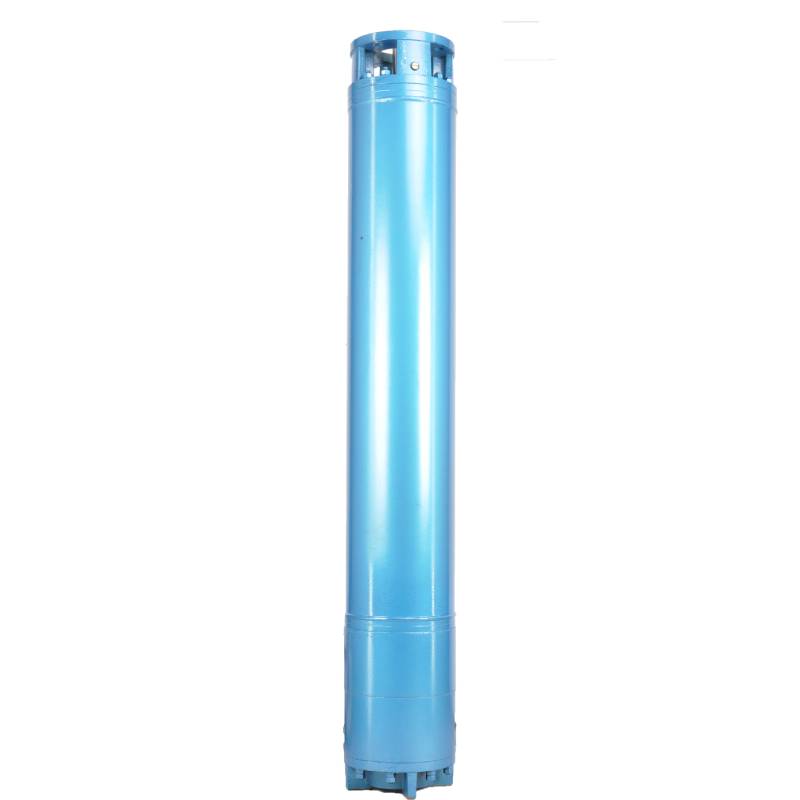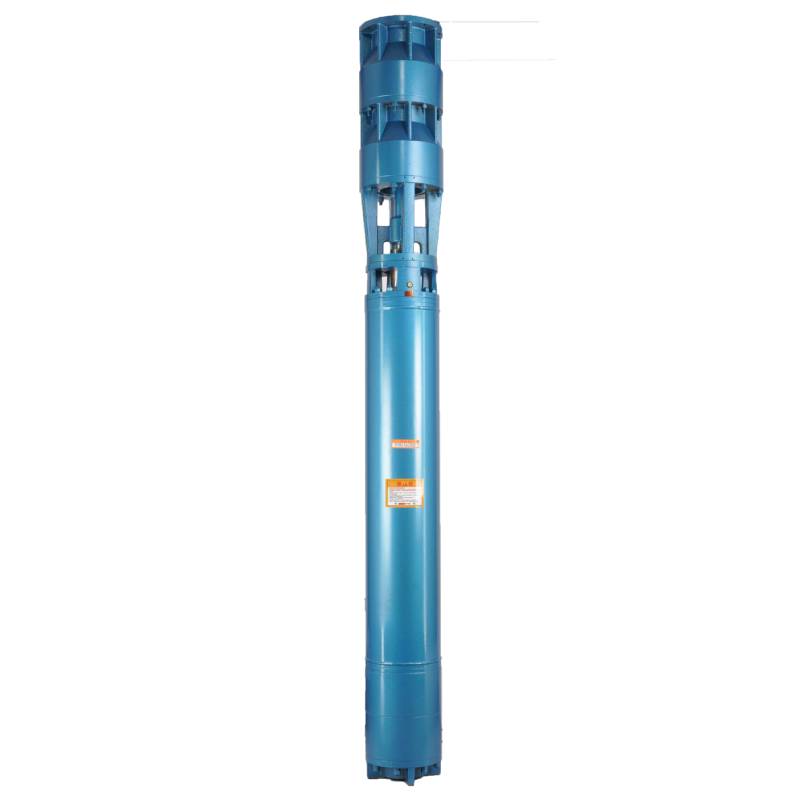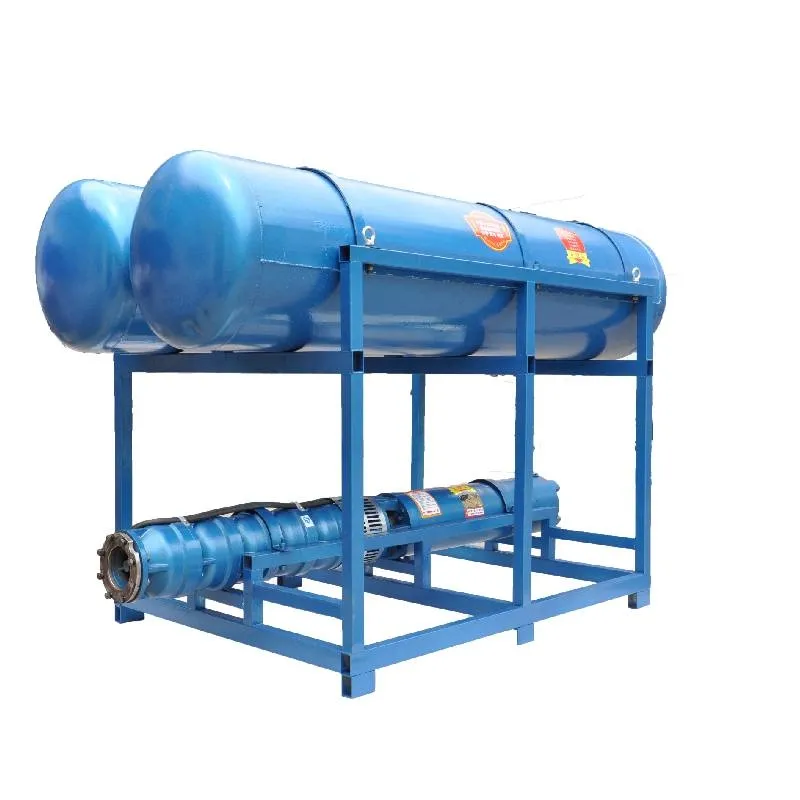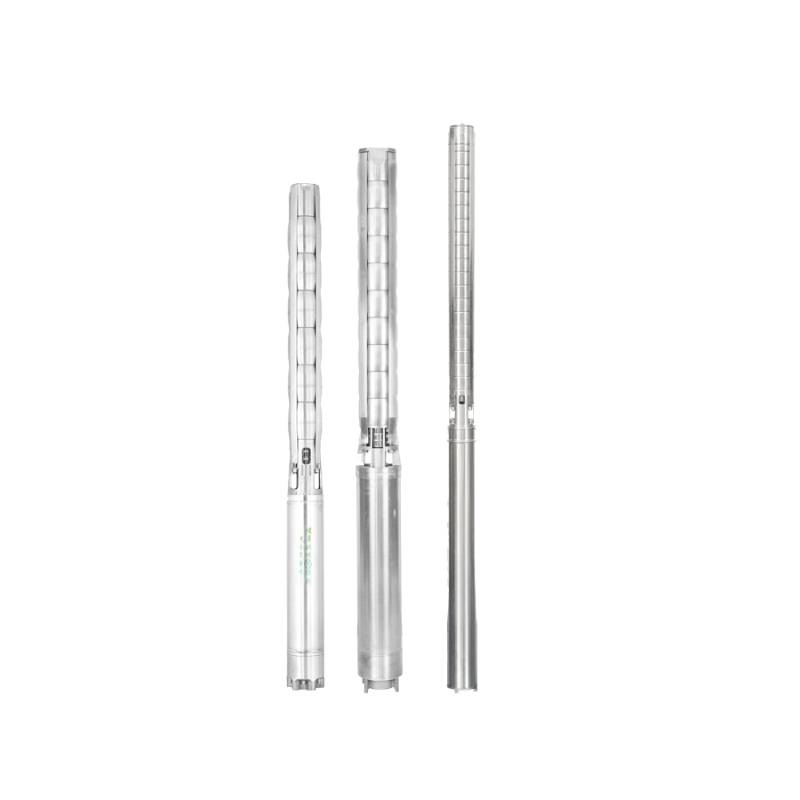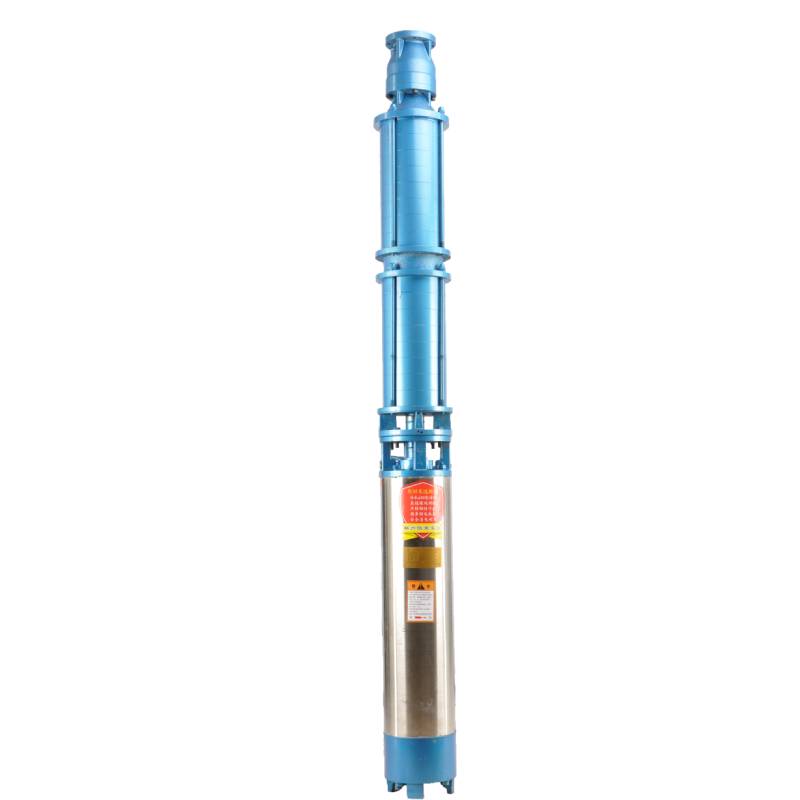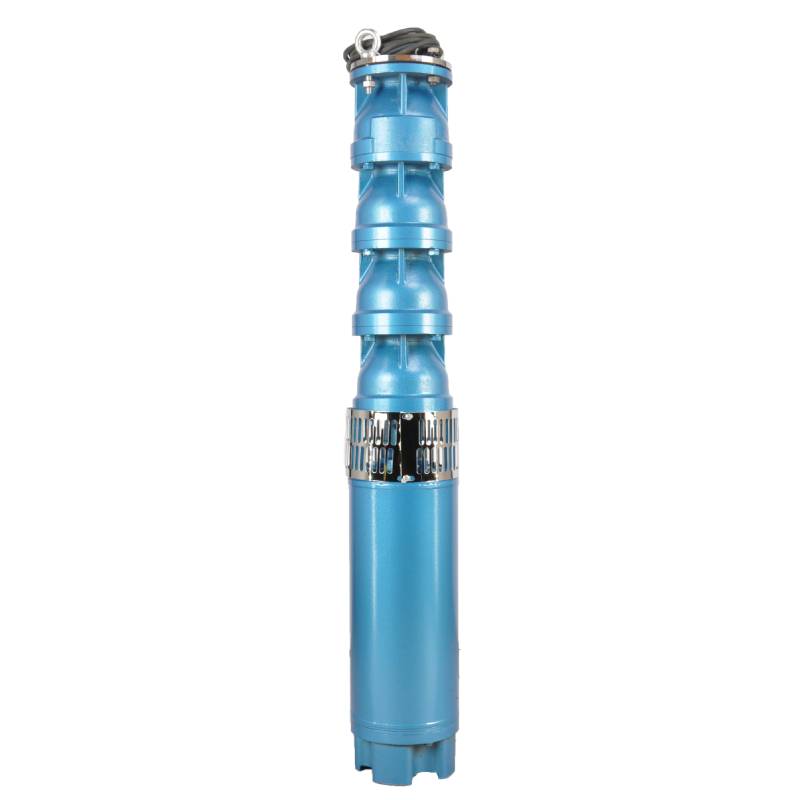This hot water pump adopts the motor made of 50W400 grade high quality cold rolled silicon steel, which is stamped by high speed punch press. It has the advantages of low stator iron loss and low self-heating. The motor winding is designed for hot water pump, high temperature resistance and anti-aging. The winding has water resistance, and adopts 3CR13 stainless steel blade shaft, high temperature resistant bushing and other high quality accessories to enable it to operate for a long time at high temperature, and can be used with frequency converter, so as to automatically adjust according to the amount of water used. This hot water pump is the ideal choice for your hot water equipment, which can operate stably and efficiently, providing you with a lasting hot water supply.
The product is a three-phase AC 380V (tolerance + / - 5%), 50HZ (tolerance + / - 1%) power supply submersible pump. With water quality requirements: water temperature is not higher than 20 °C; solid impurities content (mass ratio) is not more than 0.01%; PH value (pH) is 6.5-8.5; hydrogen sulfide content is not more than 1.5mg/L; chloride ion content is not more than 400mg/L. The electric pump adopts closed or water sealed wet structure, before use must be submersible motor inner cavity filled with clean water to prevent empty, and then tighten the water and air bolts, otherwise not to use. Its work should be completely immersed in water, immersion depth is not more than 70 meters, the distance between the bottom of the pump and the bottom of the well is not less than 3 meters. Well water inflow quantity should be able to meet the electric pump water output and continuous operation, the output water quantity should be controlled at 0.7-1.2 times of the rated flow. The well should be vertical, the electric pump can not be used horizontally or inclined, only vertically placed. The electric pump must be equipped with cables and external overload protection device as required. It is strictly prohibited to conduct no-load test under no water condition.
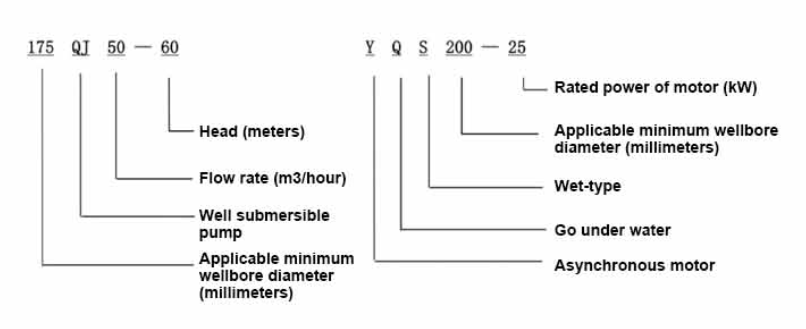
| Modell | Átfolyás (m3/h) | Fej (m) |
Forgási sebesség (változtatás/pont) |
Vízszivattyú(%) | Kimenet átmérő (mm) |
Jól alkalmazható átmérő (mm) |
Névleges power(KW) |
Névleges feszültség (V) |
Névleges áram (A) |
Motorhatás (%) | power factorcosφ | Mértékegység Radiális Maximális méret (mm) |
Megjegyzés | |||||||||
| 300QJ200-40 | 200 | 40 | 2900 | 76 | 150 | 300felett | 37 | 380 | 77.8 | 85.0 | 0.85 | 281 | ||||||||||
| 300QJ200-60 | 60 | 55 | 115 | 85.5 | 0.85 | |||||||||||||||||
| 300QJ200-80 | 80 | 75 | 154.1 | 86.0 | 0.86 | |||||||||||||||||
| 300QJ200-100 | 100 | 90 | 183.8 | 86.5 | 0.86 | |||||||||||||||||
| 300QJ200-120 | 120 | 100 | 204.3 | 86.5 | 0.86 | |||||||||||||||||
| 300QJ200-140 | 140 | 125 | 249.5 | 87.5 | 0.87 | |||||||||||||||||
| 300QJ200-160 | 160 | 140 | 277.8 | 88.0 | 0.87 | |||||||||||||||||
| 300QJ200-180 | 180 | 160 | 317.5 | 88.0 | 0.87 | |||||||||||||||||
| 300QJ200-200 | 200 | 185 | 367.2 | 88.0 | 0.87 | |||||||||||||||||
| 300QJ200-240 | 240 | 220 | 436.6 | 88.0 | 0.87 | |||||||||||||||||
| 300QJ320-30 | 320 | 30 | 2900 | 77 | 200 | 300felett | 45 | 380 | 94.6 | 85.0 | 0.85 | 281 | ||||||||||
| 300QJ320-60 | 60 | 90 | 183.8 | 86.5 | 0.86 | |||||||||||||||||
| 300QJ320-90 | 90 | 125 | 249.5 | 87.5 | 0.87 | |||||||||||||||||
| 300QJ320-120 | 120 | 160 | 317.5 | 88.0 | 0.87 | |||||||||||||||||
1, well submersible pump for clean water pump, prohibit the new well, pumping sediment and muddy water,
2, well water pump voltage grade of 380/50HZ, the use of other voltage grades of submersible motors need to be customized. The underground cable must use waterproof cable, must be equipped with starting equipment, such as distribution box, start not ready should have commonly used motor comprehensive protection function, such as short circuit overload protection, phase protection, undervoltage protection, grounding protection, idling protection, in case of abnormal conditions, the protection device should be timely action trip.
3, the installation and use of the pump must be reliably grounded, prohibit the push and pull switch when the hands and feet are wet, the installation and maintenance of the pump must be cut off the power supply, the use of the pump place to set up "to prevent electric shock" obvious signs:
4, down the well or before installation, the motor cavity must be filled with distilled water or non-corrosive clean cold boiling water, tighten the / water bolt, the pump on the ground test run, must be to the pump chamber water lubrication rubber bearings, instant start not more than a second, see whether the steering is the same as the steering instructions. When the pump is upright, pay attention to safety, prevent overturning injury.
5, szigorúan a szivattyú emelésére, az áramlási tartományra vonatkozó rendelkezéseknek megfelelően, hogy megakadályozzák az alacsony áramlást vagy a nagy emelőerőt, a nyomócsapágyat és a kopás egyéb részeit, a motor túlterhelése égett
6, miután a szivattyút le a kútba, a motor mérése a föld szigetelési ellenállása nem lehet kevesebb, mint 100M, az indulás után figyelje meg a feszültséget és az áramot, ellenőrizze a motor tekercsszigetelését, hogy megfelel-e a követelményeknek; A szivattyú tárolási helyének hőmérséklete, ha fagypont alatt van, száraznak kell lennie a motor üregében lévő víznek, megelőzve a motorüreg vízjégének alacsony hőmérséklet által okozott károsodását.
The pump part is mainly composed of pump shaft, impeller, shunt shell, rubber bearing, check valve body (optional) and other components. The motor part is mainly composed of base, pressure regulating diaphragm, thrust bearing, thrust plate, lower guide bearing seat, stator, rotor, upper guide bearing seat, sand discharging ring, water inlet section, lead cable and other components. The main characteristic of this product is that the motor is a water-cooled submersible three-phase asynchronous motor, and the motor cavity is filled with water to cool the motor and lubricate the bearing. The pressure regulating diaphragm at the bottom is used to adjust the expansion-contraction pressure difference in the body caused by the change of the temperature rise of the motor. In order to prevent the sand particles in the well water from entering the motor, two oil seals are installed at the upper end of the motor shaft extension, and a sand discharging ring is installed to form a sand discharging structure. In order to prevent the pump shaft from jumping when starting, the pump shaft and the motor shaft are connected together through a coupling, and a thrust bearing is installed at the bottom of the motor. The lubrication of the motor and the pump bearing is realized through water lubrication. The stator winding of the motor is made of high-quality well motor winding wire, with high insulation performance. The pump is designed by computer CAD, with simple structure and good technical performance.

(1) Előkészítés a telepítés előtt:
1. Ellenőrizze, hogy a búvárszivattyú megfelel-e a kézikönyvben megadott használati feltételeknek és hatókörnek.
2. A búvárszivattyú maximális külső átmérőjével megegyező átmérőjű nehéz obiect segítségével mérje meg, hogy a kút belső átmérője illeszkedik-e a búvárszivattyúhoz, és mérje meg, hogy a kút mélysége megfelel-e a telepítési követelményeknek.
3. Ellenőrizze, hogy a kútfúrás tiszta-e, és hogy a kút vize zavaros-e. Soha ne használjon elektromos búvárszivattyút a sár és homokvíz mosásához, hogy elkerülje a merülő elektromos szivattyú idő előtti károsodását.
4. Ellenőrizze, hogy a hegesztőfej szerelőbilincs helyzete megfelelő-e, és hogy kibírja-e az egész egység minőségét
5. Ellenőrizze, hogy a búvárszivattyú alkatrészei teljesek-e és megfelelően vannak-e beszerelve a kézikönyv összeszerelési rajza szerint. Távolítsa el a szűrőernyőt, és forgassa el a tengelykapcsolót, hogy lássa, rugalmasan forog-e
6. Csavarja ki a vízcsavart, és töltse fel a motor üregét tiszta, nem korrozív vízzel (megjegyzés: feltétlenül töltse fel), majd húzza meg a vízcsavart. 12 óra vízbefecskendezés után a motor szigetelési ellenállása nem lehet kisebb 150M Q-nál 500V-os rázóasztallal mérve.
7. Cable joint, cut off a 120mm rubber sleeve from one end of the outgoing cable and the matching cable with an electrician's knifethen stagger the length of the three core wires in a stepped shape, peel off a 20mm copper core, scrape of the oxide layer on theoutside of the copper wire with a knife or sand cloth, and insert the two connected wire ends in palirs.After tying the layer tightly with fine copper wire, solder it thoroughly and firmly, and sand of any. burrs on the surface. Then, forthe three joints, use polyvester insulation tape to wrap them in a semi stacked manner for three lavers. Wrap the two ends of thewrapping layer tightywith nyion thread,and then use a semi stacked method to wrap the tape for three layers. Wrap the outellayer with high-pressure insulation tape for three layers. Finally, fold the threestrands together and repeatedly wrap them for fivelayers with high-pressure tape. Each layer must be tightly tied, and the interlayer joints must be tight and fimm to prevent water frompenetrating and damaging the insulation, After wrapping, soak in water at room temperature of 20 ’c for 12 hours, and measurethe insulation resistance with a shaking table, which should not be less than 100M Ω
A mellékelt kábelezési folyamatábra a következő: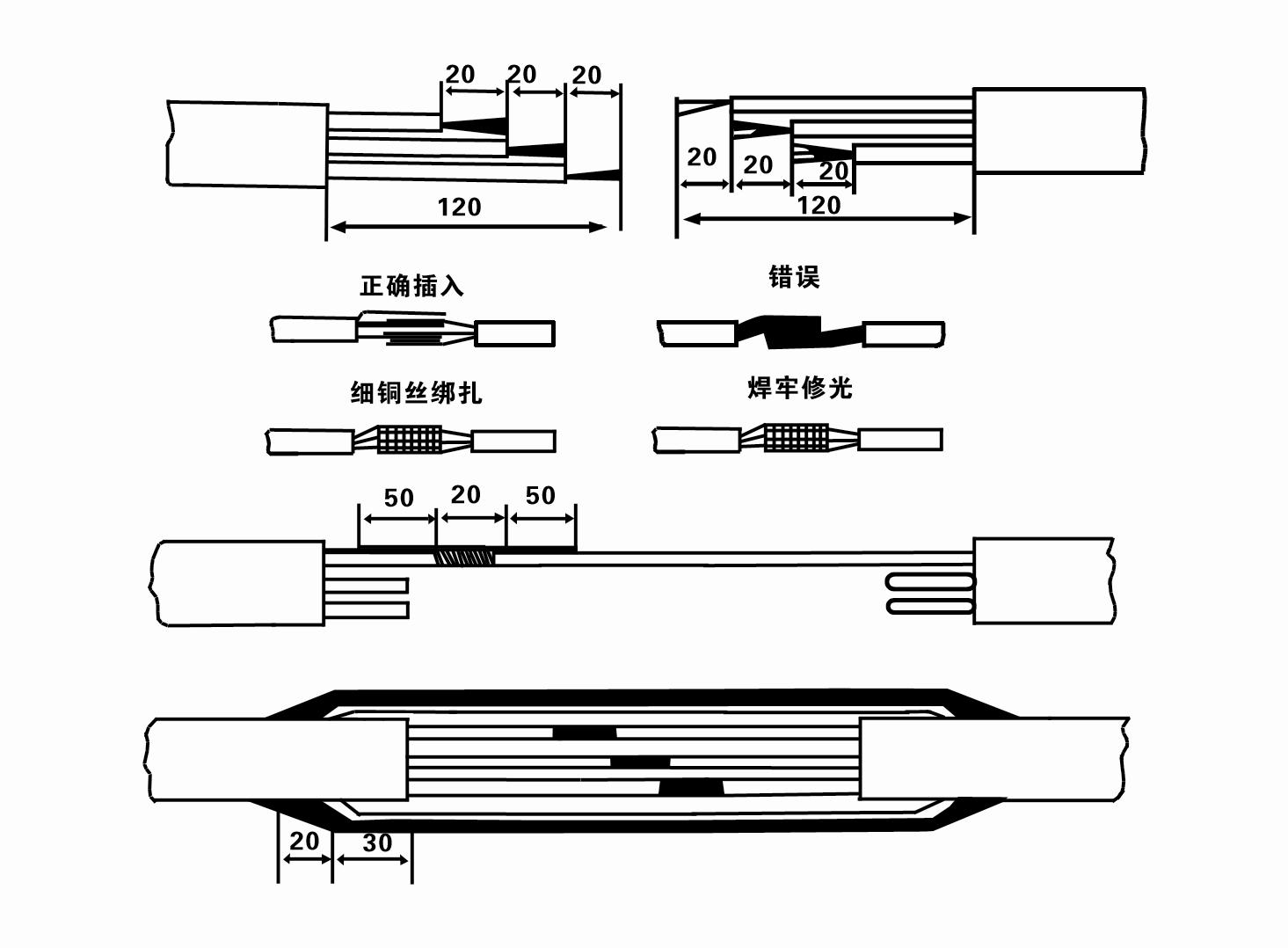
8. Multiméter segítségével ellenőrizze, hogy a háromfázisú vezetékek csatlakoztatva vannak-e, és hogy az egyenáramú ellenállás megközelítőleg kiegyensúlyozott-e.
9. Ellenőrizze, hogy nincs-e túlterhelve az áramkör és a transzformátor kapacitása, majd csatlakoztassa a túlterhelésvédő kapcsolót vagy az indítóberendezést. Lásd a 2. táblázatot az egyes modellekért, majd öntsön egy vödör vizet a vízszivattyúba a vízszivattyú kimeneténél, hogy megkenje a szivattyú gumicsapágyait, majd helyezze függőlegesen és stabilan a merülő elektromos szivattyút. Indítás (legfeljebb egy másodperc) és ellenőrizze, hogy a kormányzás iránya összhangban van-e a kormánytáblával. Ha nem, cserélje ki a háromfázisú kábel bármelyik két csatlakozóját. Ezután helyezze be a szűrőt, és készüljön fel a kútba való lejutásra. Ha különleges alkalmakkor (például árkok, árkok, folyók, tavak, tavak stb.) használják, az elektromos szivattyút megbízhatóan földelni kell.
(2) Szerelési berendezések és szerszámok:
1. Egy pár emelőlánc több mint két tonnához.
2. Legalább négy méter függőleges magasságú állvány.
3. Két akasztókötél (drótkötél), amelyek egy tonnánál nagyobb súlyt is elbírnak (elbírják egy teljes vízszivattyú-készlet súlyát).
4. Szereljen fel két pár bilincset (sínt).
5. Villáskulcsok, kalapácsok, csavarhúzók, elektromos szerszámok és műszerek stb.
(3) Elektromos szivattyú beszerelése:
1. A merülő elektromos szivattyú beépítési rajza a 2. ábrán látható. A konkrét beépítési méretek a 3. táblázatban láthatók "A merülő elektromos szivattyú beépítési méreteinek listája".
2. A 30 méternél kisebb emelőmagasságú búvárszivattyúk közvetlenül a kútba emelhetők tömlők és drótkötelek vagy más kenderkötelek segítségével, amelyek elbírják a teljes gép, a vízvezetékek és a csövekben lévő víz teljes súlyát.
3. A 30 méternél nagyobb fejű szivattyúk acélcsöveket használnak, és a telepítési sorrend a következő:
①Kilincs segítségével rögzítse a vízszivattyú alkatrészének felső végét (a motor és a vízszivattyú ekkor össze van kötve), emelje fel egy függőlánccal, és lassan kösse be a kútba, amíg Tegye fel a bilincset a kútfejre és távolítsa el a függő lánc.
② Használjon egy másik bilincspárt egy cső rögzítéséhez, emelje fel egy függőlánccal 15 cm-re a karimától, és lassan engedje le. A csőkarima és a szivattyú karima közé Helyezze a gumibetétet a helyére, és csavarokkal, anyákkal és rugós alátétekkel egyenletesen húzza meg a csövet és a szivattyút.
③ Enyhén emelje meg a búvárszivattyút, távolítsa el a bilincset a vízszivattyú felső végén, rögzítse a kábelt erősen a vízcsőhöz egy műanyag szalaggal, és lassan kösse le, amíg a bilincs a kútfejre nem kerül.
④ Ugyanezzel a módszerrel kösse be az összes vízvezetéket a kútba.
⑤ Miután a kivezető kábelt csatlakoztatta a vezérlőkapcsolóhoz, csatlakozik a háromfázisú tápegységhez.
(4) A telepítés során figyelni kell:
1. Ha a szivattyúzási folyamat során elakadást észlel, fordítsa el vagy húzza meg a vízcsövet, hogy kiküszöbölje az elakadási pontot. Ha a különféle intézkedések továbbra sem működnek, kérjük, ne erőltesse le a szivattyút, hogy elkerülje a merülő elektromos szivattyú és a kút sérülését.
2. A szerelés során minden cső karimájára gumibetétet kell helyezni, és egyenletesen meg kell húzni.
3. Amikor a vízszivattyút leengedik a kútba, a kútcső közepére kell helyezni, hogy a szivattyú ne futhasson hosszú ideig a kút falának, ami a szivattyú rezgését, a motor söpörését és égését okozza. .
4. Határozza meg a vízszivattyú mélységét a kút aljáig a kút folyó homok- és iszapviszonyoknak megfelelően. Ne temessük a szivattyút a sárba. A vízszivattyú és a kút alja közötti távolság általában nem kevesebb, mint 3 méter (lásd a 2. ábrát).
5. A vízszivattyú vízbevezetési mélysége nem lehet kevesebb, mint 1-1,5 méter a dinamikus vízszinttől a vízbevezető csomópontig (lásd 2. ábra). Ellenkező esetben a vízszivattyú csapágyai könnyen megsérülhetnek.
6. A vízszivattyú emelése nem lehet túl alacsony. Ellenkező esetben a kútfej vízvezetékére tolózárat kell felszerelni, amely szabályozza a szivattyú áramlását a névleges áramlási ponton, hogy megakadályozza a motor túlterhelését és kiégését a nagy áramlási sebességek miatt.
7. Amikor a vízszivattyú működik, a vízkimenetnek folyamatosnak és egyenletesnek kell lennie, az áramerősségnek stabilnak kell lennie (névleges üzemi körülmények között, általában nem haladhatja meg a névleges áram 10%-át), és nem lehet rezgés vagy zaj. Ha bármilyen rendellenességet észlel, le kell állítani a gépet, hogy megtudja az okot és megszüntesse azt.
8. Telepítéskor ügyeljen a motor földelő vezetékének beállítására (lásd 2. ábra). Ha a vízcső acélcső, vezesse ki a kútfej bilincséből; ha a vízcső műanyag cső, vezesse el az elektromos szivattyú földelési jelétől.
After installation of the underwater pump, it is necessary to recheck the insulation resistance and three-phase continuity of the switch, and check whether the connection between the instrument and the starting equipment is wrong. If there is no problem, you can start the test machine. After starting, observe whether the indication reading of each instrument is correct. If the rated voltage and current specified on the nameplate are exceeded, observe whether the pump has any noise or vibration. If everything is normal, it can be put into operation. Four hours after the first operation of the pump, it should be turned off and the thermal insulation resistance of the motor should be quickly tested, and its value should not be less than 0.5 megaohm. After stopping the pump, it should be restarted after an interval of five minutes to prevent the water column in the pipeline from completely reversing, resulting in the motor burning due to excessive current. After the pump is put into normal operation, in order to prolong its service life, it is necessary to check regularly whether the supply voltage, working current and insulation resistance are normal. If the following conditions are found, the machine should be stopped immediately to eliminate the fault:
1 the current exceeds 20% under the rated working condition.
2 the dynamic water level drops to the inlet section, resulting in intermittent drainage.
3 the underwater pump vibrates violently or emits huge noise.
4 the supply voltage is lower than 340 volts.
5 a fuse is burned.
6 the water pipe is damaged.
7 the thermal insulation resistance of the motor to the ground is less than 0.5 megaohm.
When disassembling the device, it is necessary to untie the cable bundle and remove the pipeline part and the line protection plate. Remove the drain bolt and exclude all water in the motor chamber. Remove the filter element and loosen the screw on the coupling fixed to the motor shaft. Unscrew the bolt connecting the water inlet section and the motor, and separate the pump and the motor (pay attention to placing the device horizontally when separating to prevent the bending of the pump shaft). The sequence of disassembling the pump is as follows: (see Figure 1) water inlet section, impeller, water inlet shell, impeller. Check the valve body, and use a special tool to loosen the cone sleeve fixed to the impeller when removing the impeller. In the process of disassembly, avoid bending the pump shaft and damaging various components. The disassembly process of the motor is as follows: (see Figure 1) put the motor on the platform, and remove the nuts on the screw (pull rod bolt), base, shaft head lock nut, thrust plate, key and lower guide rail - bearing seat, bolt, and then remove the rotor (be careful not to damage the wiring harness), and finally remove the connecting parts and upper guide bearing seat. Unit assembly: before assembly, the rust and dirt of each component should be cleaned, and the sealant should be coated on each mating surface and fastener, and then assembled in the opposite order of disassembly (the movement of the motor shaft after assembly is about one millimeter), after the assembly is completed, the coupling should be flexibly rotated, and then the filter element should be placed for testing. Each time the underwater electric pump has been used for one year, or less than one year but has been immersed for two years, it must be disassembled and inspected in accordance with Article 5 and replace the worn parts.
1, engedje ki a vizet a motor üregében (főleg télen, hogy ne fagyjon be a motor), és kösse be jól a kábelt.
2, store in an indoor room without corrosive substances and gases, with a temperature below 40 °C.
3, a hosszú távú használat során figyelmet kell fordítani a búvárszivattyúk rozsda megelőzésére.
- Járókerék
- Tengelyhüvely
- Gumi tengelyhüvely
-
Tömítőgyűrű
01 Mélykút vízvétele
02 Sokemeletes vízellátás
03 hegyi vízellátás
04 toronyvíz
05 Mezőgazdasági öntözés
06 kerti öntözés
07 folyami vízvétel
08 használati víz

